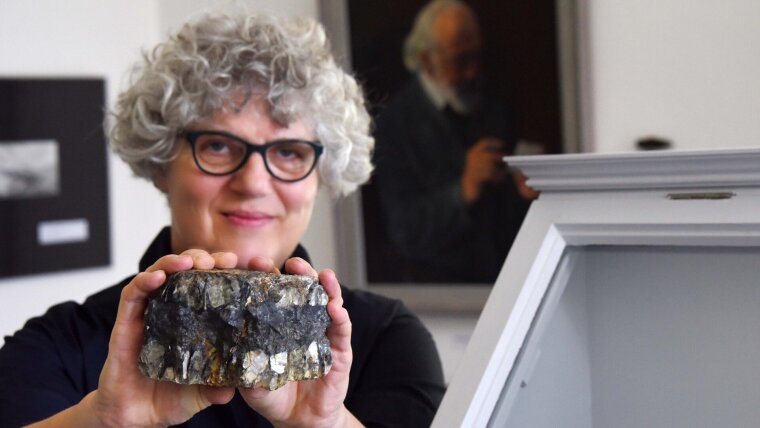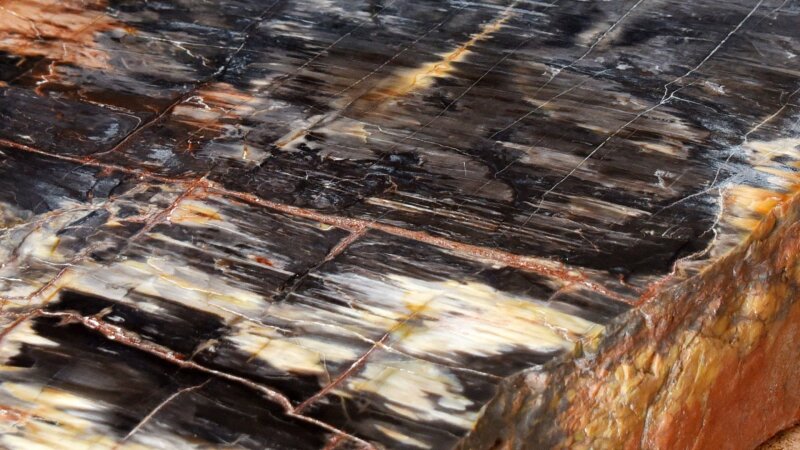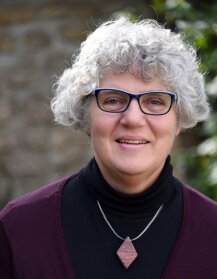
- Event
- Knowledge Transfer and Innovation
Published: | By: Angelika Schimmel
Zinnwald, Goldwasserthal, Silberstrasse and above all Erzgebirge - these place or field names give a clear indication of the treasures that the land in southern Saxony harbours. If you follow the 275-kilometre Saxon-Bohemian Silver Route from Zwickau to Dresden, you can gain deep insights into the region's thousand-year history of ore mining in more than 30 visitor mines and will certainly be amazed at the variety of mineral resources.
However, those interested can also follow the trail of precious metals, rocks and minerals in the Ore Mountains from the early Middle Ages to the present day and even into the future at the Mineralogical Collection of the Friedrich Schiller University in Jena. "From Agricola to the future" is the title of the special exhibition, which will open on Monday, 27 May 2024, at 6 pm.
Remembering the father of the Geosciences
The excursion begins with Georgius Agricola, who was born Georg Bauer in Glauchau in 1494. After studying ancient languages, Medicine, Physics and Chemistry in Leipzig, Bologna and Padua and returning to Chemnitz, Agricola studied the minerals, ores and geological features of his Saxon-Bohemian homeland extensively. "Some consider Agricola to be the 'father of mineralogy', but I would say he was much more the founder of Geosciences," says Dr Birgit Kreher-Hartmann, curator of the new special exhibition.
Agricola not only dealt with minerals, earths, gemstones and metallic slags, their formation, properties and deposits, he also wrote fundamental treatises on mining and ore processing. In the ten books of his main work "De natura fossilium", Agricola comprehensively summarised his own observations and findings as well as the mineralogical and geological knowledge of the time in 1546. "Agricola was not only a typical Renaissance polymath, he worked with a systematic, scientific approach and must also have had very good powers of observation: He also had his first thoughts about the consequences for the environment based on the use of mercury in gold mining," explains Kreher-Hartmann. In addition to Agricola, visitors to the exhibition also get to know Abraham Gottlob Werner, the scientist who developed geognosy as the science of the physical and mineralogical composition of the earth and established mineralogy as an independent specialism at the Freiberg Mining Academy. Many later famous scientists studied under Werner in Freiberg in the 18th century, including Alexander von Humboldt.
Saxon deposits and their treasures
Saxony's Geology is very diverse, the Saxon soil harbours treasures ranging from basalt and barite to lithium, nickel, serpentine and silver to uranium, tungsten and tin. The first silver mining in the Freiberg mining district dates back to the 11th century, and for centuries silver mining ensured income and prosperity for the people in the region. It is no coincidence that the Erzgebirge/Krušnohoří mining region was awarded World Heritage status by UNESCO in 2019.
Like tin from Geyer or Altenberg, nickel from Sankt Egidien and uranium ore from the Königstein mining district, silver no longer plays a role in Saxony's mining industry. Recently, however, interest in mineral resources from the Ore Mountains has been growing again, as demonstrated by the extraction of barite near Oberwiesental or the planned mining of lithium near Zinnwald. A large, up-to-date geological map of Saxony provides a good overview in the exhibition.
Both the historical and current sites are presented in the special exhibition in individual display cases - around 150 exhibits from the museum's own collection, as well as items on loan from the deposits of the Federal Institute for Geosciences and Natural Resources in Berlin, demonstrate the wealth of Saxony's geological treasure trove. On public display for the first time are pieces from the Burggraf private collection, which have been bequeathed to the Jena Mineralogical Collection on permanent loan. The spectrum ranges from minerals weighing just a few grams to lumps weighing many kilos. There are specimens from the deposits in the central Erzgebirge, such as heavy spar from precipitation, as well as rock samples from the granulite mountains north of Chemnitz.
"As Geology doesn't stop at borders, we also look at deposits in the surrounding area, presenting volcanites with colourful agate druses and delicate, wine-yellow topaz crystals from the Schneckenstein in Vogtland," explains Kreher-Hartmann. Even if they make a less spectacular impression than agate druses or topazes, the black wire spirals on galena from the Freiberg district, which are barely a centimetre in size, are "real gems" for the mineralogist from Jena. These are so-called silver curls that "grow" on galena, but in contrast to their shiny metallic carrier material, they are dull black because they oxidise immediately.
Zinnwaldite - a material with a great future
"The tin deposits near Geyer, Zinnwald and Altenberg are a major topic, and we are presenting various artefacts from there," reports the curator. "Tin was formed as a result of hydrothermal activity in granite rock, whereby certain elements are broken down by water and others are deposited. We present so-called aged granites with tiny dark tin inclusions, as well as rocks with thick ore veins," explains the mineralogist.
That part of the exhibition also refers to the most recent chapter in Saxony's mining history, the mining of lithium. Geologists around the world are searching for mineable deposits of valuable trace metals such as lithium. "The deposits of lithium mica in the Saxon-Bohemian Ore Mountains near Zinnwald/Cínovec, which are considered the second largest deposit in Europe, have been identified as such." Mining is still in the planning phase, but the impressive chunks of shiny silvery mica in the Jena mineralogy exhibition give an idea that Zinnwaldite could be of great importance for the technical implementation of e-mobility, and not just in Germany.
Silicified wood (detail) is also shown in the new exhibition.
Image: Anne Günther (University of Jena)Opening hours:
The special exhibition "From Agricola to the Future" will open on 27 May 2024 at 6 pm in the Mineralogical Collection of Jena University, Sellierstraße 6.
It can be viewed until 20 November during opening hours on Mondays and Thursdays 1-5 pm, Sundays 1-5 pm by prior arrangement, including during the summer and autumn holidays.
Guided tours are planned, including for the Jena Museum Night on 31 May 2024.

